NAVYPEDIA
 Support the project with paypal
Support the project with paypal
Photo

sister-ship HMAS Manoora
Ships
| Name | Launched // Comm. | Builder | Tonnage, BRT | Dimensions, m | Speed, kts | Machinery, Fuel, t | Armament (angle of elevation) | Fate |
|---|---|---|---|---|---|---|---|---|
| Monowai F59 | 16.10.1924 // 10.1939 | Harland & Wolff, Belfast, UK | 10852 | 158.2x19.3x7.9 | 19 | 2VQE, oil 1560 | 8 - 152/45 Mk VII (20), 2 - 76/45 | troop transport 6.1943 |
Graphics
Project history
At beginning of war Admiralty confiscated more than 50 passenger and passenger-cargo liners of the average sizes for using as auxiliary cruisers for patrol and escort services. The majority has become operational after short refit in late 1939 - early 1940. For increasing of damage tolerance tween deck space was filled with empty oil barrels. Efficiency of a similar measure illustrates that fact, that for sinking of Forfar, Salopian and Patroclus it was required 5, 6 and 7 torpedoes respectively.
In 1939 - 1941 AMCs lost 15 ships, then Admiralty have come to conclusion as usage of so large ships as AMC is erroneous, but in a role of troop transports they could bring much bigger advantage (interestingly, that less than a year after a beginning of war German submarine forces HQ had a similar deciding concerning value of British auxiliary cruisers as objects of attacks: from mid-1940 troop transports were considered by the German submariners as more important targets). Since 1941 the gradual conversion of AMCs to transports has begun. This process basically was completed in 1943 though a number of the ships served as AMCs, but they were used already absolutely on other assignment.
Modernizations 6.
1942: - 2 x 1 - 152/45 Mk VII (20°); + 2 x 1 - 152/45 Mk XII (30°)
Naval service
No significant events.
 HOME
HOME FIGHTING SHIPS OF THE WORLD
FIGHTING SHIPS OF THE WORLD NEW ZEALAND
NEW ZEALAND CONVERTED MERCHANT VESSELS
CONVERTED MERCHANT VESSELS WWII armed merchant cruisers
WWII armed merchant cruisers
